
MEAT SCIENCE
Scope & Guideline
Shaping Tomorrow's Meat Science Today
Introduction
Aims and Scopes
- Meat Quality Assessment:
Research on various factors influencing meat quality, including pH, tenderness, juiciness, and flavor profiles. This area encompasses both sensory evaluations and instrumental measurements. - Food Safety and Microbiology:
Studies addressing microbial contamination, pathogen control, and preservation methods to enhance meat safety. This includes research on biopreservation techniques, antimicrobial agents, and the effects of processing on microbial load. - Nutritional Aspects of Meat:
Examinations of the nutritional value of different meat types, including fatty acid profiles, amino acid compositions, and the impact of dietary sources on meat quality. - Innovative Processing Technologies:
Research on novel meat processing methods such as high-pressure processing, sous-vide cooking, and the use of natural preservatives to improve meat quality and shelf-life. - Consumer Behavior and Market Trends:
Investigations into consumer preferences, perceptions of meat quality, and the factors influencing meat purchasing decisions. This includes studies on health, sustainability, and ethical considerations in meat consumption. - Genetic and Physiological Factors:
Research exploring the genetic basis of meat quality traits, including studies on muscle fiber characteristics, proteomics, and the impact of animal genetics on meat attributes.
Trending and Emerging
- Sustainable Meat Production:
Increasing focus on sustainable practices within meat production, including the use of alternative feed sources, reduction of environmental impacts, and consumer demand for ethically sourced meat. - Advanced Analytical Techniques:
Growing interest in employing advanced technologies like machine learning, near-infrared spectroscopy, and metabolomics to assess meat quality, authenticity, and safety. - Health and Wellness Trends:
Research linking meat consumption to health outcomes, addressing issues such as red and processed meat consumption and its implications for cardiovascular health and dietary guidelines. - Alternative Proteins and Meat Substitutes:
Emerging research on the acceptance and quality of alternative protein sources, including cultivated meat and plant-based substitutes, reflecting changing consumer attitudes towards meat consumption. - Biotechnology in Meat Preservation:
Innovative approaches utilizing biotechnology for meat preservation, including natural preservatives, probiotics, and the use of bioactive compounds to enhance shelf-life and safety.
Declining or Waning
- Traditional Meat Processing Techniques:
There has been a noticeable decrease in research specifically focused on conventional meat processing methods, as newer technologies and innovative approaches gain prominence. - Basic Nutritional Analysis:
Studies that merely assess basic nutritional components of meat without linking them to broader health implications or consumer perceptions have been less frequent, suggesting a shift towards more integrated research. - Animal Welfare Practices in Meat Production:
Although still important, the frequency of publications specifically dedicated to animal welfare practices in the context of meat production has decreased, possibly overshadowed by more pressing food safety and quality research.
Similar Journals

FLEISCHWIRTSCHAFT
Unveiling the science behind quality meat products.FLEISCHWIRTSCHAFT is a prominent academic journal published by Deutscher Fachverlag GmbH, dedicated to the field of food science, with a special focus on the meat industry. Established in Germany and boasting an ISSN of 0015-363X, this journal provides invaluable insights into meat production, processing, and quality assurance. Although it operates on a standard subscription basis, its contributions are essential for researchers, professionals, and students who seek to advance their knowledge in food safety, technology, and industry trends. With its historical convergence years spanning from 1973 to 2022, FLEISCHWIRTSCHAFT presents a rich repository of research that caters to current and evolving challenges within the agricultural and biological sciences. Classified in the Q4 quartile for Food Science, this journal plays a critical role in disseminating important findings and fostering scholarly dialogue within a niche but crucial sector of food science.
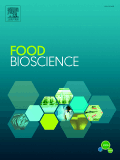
Food Bioscience
Exploring the Nexus of Food and Biological SciencesFood Bioscience is a leading peer-reviewed journal published by Elsevier, dedicated to advancing the understanding of the complex interplay between food science and biosciences. With an impressive Impact Factor that places it in the Q1 and Q2 quartiles for Food Science and Biochemistry respectively, the journal consistently ranks among the top publications in its field, reflected in its Scopus rankings (Rank #83/389 in Food Science and Rank #175/438 in Biochemistry). Since its inception in 2013, Food Bioscience has fostered a multidisciplinary approach, bridging gaps between research in agricultural, biological, and food sciences, thus encouraging innovative solutions to the pressing challenges facing the global food supply chain. Although it currently operates under a subscription model, the journal is committed to disseminating high-quality research, making significant contributions to both academic scholarship and industry practices. Researchers, professionals, and students alike are invited to explore the wealth of knowledge contained within its pages as it plays a pivotal role in shaping the future of food bioscience.
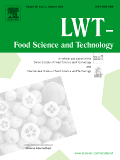
LWT-FOOD SCIENCE AND TECHNOLOGY
Transforming food technology for a better tomorrow.LWT - Food Science and Technology is a premier academic journal published by Elsevier, specializing in the multifaceted fields of food science and technology. With a distinguished presence since its inception in 1973, this journal has evolved to become a vital resource for researchers and professionals aiming to advance knowledge in food safety, preservation, processing, and sensory analysis. Currently ranked in the Q1 quartile of food science journals, it holds an impressive Scopus ranking of 22 out of 389 in the Agricultural and Biological Sciences category, placing it in the 94th percentile. While certain articles may be available via subscription, LWT is committed to disseminating cutting-edge research that enhances food quality and innovation. This journal not only serves as a critical platform for the exchange of scientific ideas but also addresses contemporary challenges in food technology, ensuring that it remains essential for scholars, industry professionals, and students alike seeking to contribute to and stay abreast of advancements in the field.

CZECH JOURNAL OF ANIMAL SCIENCE
Fostering Innovation in Zoological ResearchThe Czech Journal of Animal Science, published by the Czech Academy Agricultural Sciences, is a premier open-access journal dedicated to advancing research in the fields of animal science and zoology. With an impressive ranking of Q2 in its category for 2023, it underscores its significance within the academic community, evidenced by its Scopus rank of #197 out of 490 in Animal Science and Zoology, placing it in the 59th percentile among peers. The journal has been a crucial platform for scholarly communication since its inception and has embraced open access since 2004, ensuring that research is widely available to a global audience. Targeted toward researchers, professionals, and students, the journal publishes high-quality original research, review articles, and case studies that contribute to the understanding and enhancement of animal science practices. Its commitment to rigorous peer review and its broad scope undoubtedly solidify its role as an essential resource for those engaged in animal research and agriculture, fostering continued innovation and knowledge transfer in this vital sector.

Translational Animal Science
Unlocking Insights for Better Animal CareTranslational Animal Science, published by Oxford University Press Inc, stands as a prominent journal in the fields of Animal Science and Zoology as well as Veterinary Sciences, achieving a commendable Q2 ranking in both categories for 2023. With an E-ISSN of 2573-2102 and transitioning to an Open Access model since 2017, this journal fosters accessibility and dissemination of vital research that bridges the gap between basic animal science and its practical applications. The journal's significant impact factor, where it ranks in the 71st and 65th percentiles respectively for Veterinary and Agricultural and Biological Sciences disciplines, highlights its importance as a resource for emerging trends and innovations in animal research. With submissions accepted until 2024, Translational Animal Science not only contributes to advancing knowledge but also aims to engage a broad audience of researchers, professionals, and students dedicated to improving animal health and welfare. Based in India, the journal serves as an essential platform for the exchange of scientific ideas that facilitate progress within these vital fields.

International Food Research Journal
Transforming Ideas into Impactful Food ResearchThe International Food Research Journal, published by UNIV PUTRA MALAYSIA PRESS, serves as a pivotal platform for disseminating innovative research within the field of food science. With an ISSN of 1985-4668 and an E-ISSN of 2231-7546, the journal has successfully established its presence since its inception in 2007, converging its findings through 2024. This esteemed journal holds a Q3 ranking in Food Science, illustrating its valuable contributions to the field as demonstrated by its Scopus rank of 276 out of 389, placing it in the 29th percentile among its peers in Agricultural and Biological Sciences. Although it operates under a traditional publishing model, its academic integrity and focus on high-quality research ensure that it remains a vital resource for researchers, professionals, and students eager to explore advances in food technology, nutrition, and safety. By encouraging interdisciplinary collaboration and critical dialogue, the International Food Research Journal plays an essential role in shaping the future of food science research.
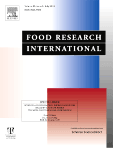
FOOD RESEARCH INTERNATIONAL
Connecting Experts in Food Science WorldwideFOOD RESEARCH INTERNATIONAL is a premier academic journal published by ELSEVIER, specializing in the field of Food Science. With an impressive impact factor and ranked Q1 in the 2023 category quartiles, it stands at the forefront of research, positioned 17th out of 389 in the Scopus ranking for Agricultural and Biological Sciences, attaining a commendable 95th percentile. The journal publishes high-quality, peer-reviewed articles that cover a broad spectrum of topics, including food safety, quality control, nutrition, and biotechnology, making it an invaluable resource for academics, industry professionals, and students alike. As FOOD RESEARCH INTERNATIONAL seeks to enhance understanding and advance technologies related to food, it encourages innovative perspectives and interdisciplinary research. The journal, active from 1992 and continuing through 2024, is an essential platform for disseminating vital findings and fostering collaboration within the global food science community.

INTERNATIONAL JOURNAL OF FOOD SCIENCE AND TECHNOLOGY
Leading the Way in Food Science and TechnologyINTERNATIONAL JOURNAL OF FOOD SCIENCE AND TECHNOLOGY, published by WILEY, serves as a premier platform for the dissemination of cutting-edge research in the field of food science and technology. With an ISSN of 0950-5423 and E-ISSN 1365-2621, this journal has been committed to publishing high-quality research since 1966 and is set to continue its impactful contributions through 2024. Recognized for its excellence, it holds a Q1 ranking in Food Science and a Q2 ranking in Industrial and Manufacturing Engineering as of 2023. The journal ranks #95/384 in Industrial and Manufacturing Engineering and #100/389 in Food Science on Scopus, placing it within the top quartiles of these fields. Although it does not currently offer Open Access, researchers and professionals benefit from access to a wealth of knowledge that advances understanding in both applied and theoretical aspects of food science. This journal is indispensable for anyone in the academic and professional domains who seeks to stay abreast of innovations and trends shaping the food industry.
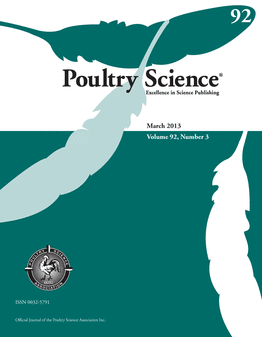
POULTRY SCIENCE
Pioneering insights in poultry genetics, nutrition, and management.POULTRY SCIENCE is a premier, peer-reviewed journal published by ELSEVIER, dedicated to advancing the field of avian biology and poultry production, encompassing a wide array of topics from genetics and physiology to nutrition and management practices. With an impressive impact factor and inclusion in the Q1 quartile for both Animal Science and Zoology as well as Miscellaneous Medicine, this journal is recognized as a leading source of high-quality research among its peers, ranking 17th out of 490 in its category. Since transitioning to Open Access in 2020, the journal has expanded its reach, allowing global accessibility to its significant findings, which are crucial for researchers, industry professionals, and students alike. The journal’s continuous publication from 1965 to 2024 underscores its long-standing commitment to fostering innovation in poultry science, making it an invaluable resource for anyone involved in the progression of this vital sector.
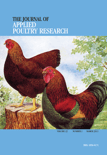
JOURNAL OF APPLIED POULTRY RESEARCH
Championing open access to vital poultry research.The Journal of Applied Poultry Research, published by Elsevier, stands as a pivotal resource in the field of poultry science. Established in 1992, this esteemed journal has transitioned to an Open Access model since 2020, fostering broader dissemination and accessibility of research findings. With an ISSN of 1056-6171 and an E-ISSN of 1537-0437, it is indexed in prominent databases, achieving a commendable Q2 ranking in the Animal Science and Zoology category as of 2023, placing it in the top 20% of journals in its field (Rank #91 out of 490, 81st percentile). The journal aims to advance the science and practice of poultry research, covering areas such as nutrition, genetics, management, and welfare. With editorial oversight that ensures rigorous peer review, the Journal of Applied Poultry Research is a vital platform that supports researchers, professionals, and students dedicated to enhancing poultry production and sustainability. Its commitment to high-quality research makes it an essential read for anyone involved in poultry science, agriculture, and related disciplines.